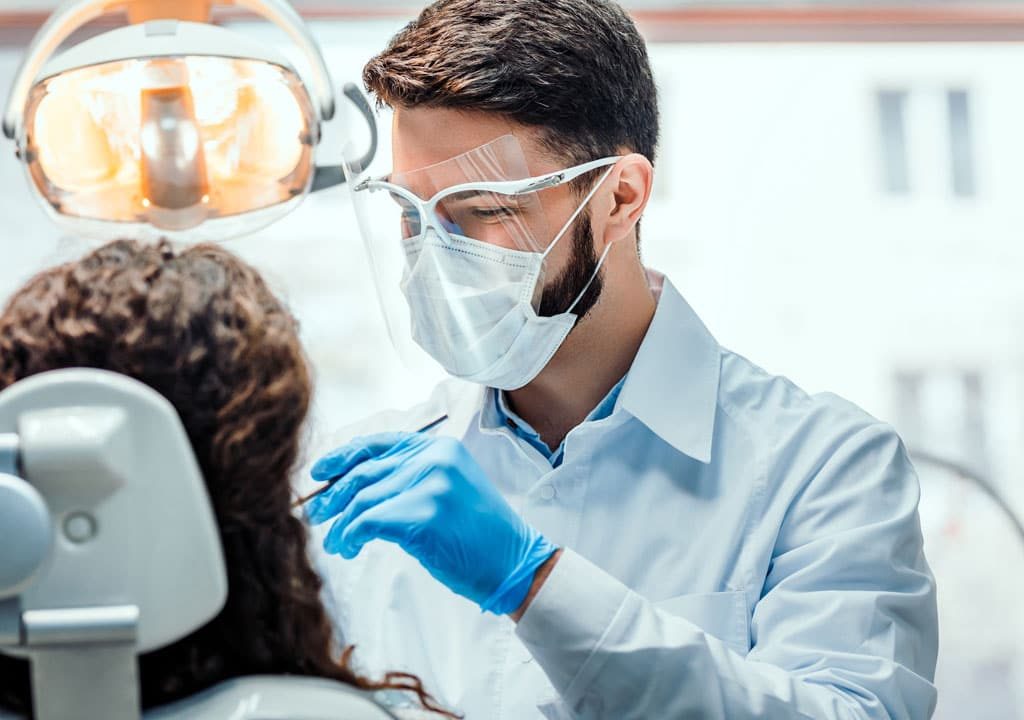
DenRoboTrack
Your path to a flawless smile

Safeguarding Smiles: Understanding the Risks of Contamination in Dentistry
Introduction
A visit to the dentist is often met with a mix of apprehension and a commitment to maintaining oral health. While dental professionals are dedicated to providing quality care, it’s crucial to recognize the potential risks associated with contamination in the dental setting. In this blog, we will delve into the various aspects of dentistry and shed light on the measures taken to safeguard patients from potential hazards.
The Dental Environment
Dental offices are bustling hubs of activity where dental practitioners work diligently to address a myriad of oral health issues. However, the close proximity of dental tools, equipment, and personnel creates an environment where the risk of contamination is ever-present. Contamination can occur through various channels, including inadequate sterilization of instruments, improper infection control protocols, and even the potential spread of airborne particles.
Instrument Sterilization
One of the cornerstones of infection control in dentistry is the proper sterilization of instruments. Dental tools, such as probes, mirrors, and scalers, come into direct contact with patients’ oral tissues and fluids. Failure to adequately sterilize these instruments can lead to the transmission of infectious agents, including bacteria and viruses.
Modern dental practices employ advanced autoclaving techniques, chemical disinfection, and stringent protocols to ensure that all instruments are thoroughly sterilized. Regular monitoring and validation of sterilization processes are crucial to maintaining a safe and contamination-free environment.
Infection Control Protocols
In addition to instrument sterilization, strict infection control protocols are implemented to minimize the risk of cross-contamination. Dental professionals adhere to guidelines set forth by health organizations to use personal protective equipment (PPE) such as gloves, masks, and eyewear to create a barrier between the patient’s oral fluids and the practitioner.
Disposable items, when applicable, are preferred to minimize the risk of contamination further. The proper disposal of contaminated materials, such as gloves and tissues, is equally important to prevent the spread of pathogens within the dental setting.
Airborne Contaminants
Contamination in dentistry is not limited to direct contact; airborne particles can also pose a risk. Aerosols generated during dental procedures can carry microorganisms and potentially infectious particles into the air. While routine dental cleanings may not generate significant aerosols, more invasive procedures like root canals or oral surgeries can create a higher risk of airborne contamination.
To mitigate this risk, modern dental offices are equipped with high-quality air filtration systems. These systems help remove and filter out airborne particles, ensuring a safer environment for both patients and dental staff. Additionally, the use of pre-procedural mouth rinses containing antimicrobial agents can help reduce the microbial load in the oral cavity, minimizing the potential for contamination.
Patient Awareness and Communication
Empowering patients with knowledge about infection control measures in dentistry is crucial for their safety. Dental professionals should communicate openly with patients, explaining the steps taken to maintain a clean and safe environment. This transparency helps build trust and ensures that patients feel confident in the dental care they receive.
Conclusion
Dentistry has made significant strides in minimizing the risks of contamination to ensure the safety of patients and dental professionals alike. From stringent sterilization practices to advanced infection control protocols, the dental community is committed to providing care in a clean and secure environment. As patients, being aware of these measures and actively participating in oral hygiene can contribute to a collaborative effort in safeguarding our smiles. Regular dental check-ups, open communication with dental professionals, and adherence to recommended oral care practices all play integral roles in maintaining a healthy and contamination-free oral environment.